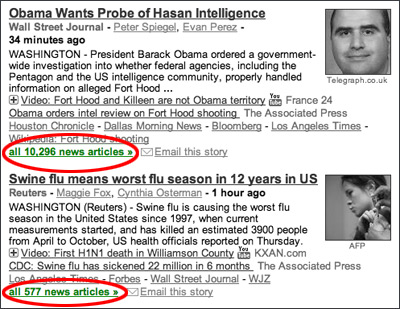 The New York Times homepage has more than 300 things you can click on, and includes more than 2,000 words. Is this how the brand sees themselves? Is this providing value to advertisers? Is this the best experience for their audience?
The New York Times homepage has more than 300 things you can click on, and includes more than 2,000 words. Is this how the brand sees themselves? Is this providing value to advertisers? Is this the best experience for their audience?
Perhaps that is a difficult question to answer for a brand that serves a city of 8+million people, plus its larger national and international audience. But what about for more focused media brands in the B2B and B2C world: Are there digital products clearly defined, and acutely attuned to the business needs of their market?
How much different does the screenshot of the NY Times’ homepage look compared to other brands serving smaller markets? Are they making the hard choices to say what they are and what they are not? Likely, they are including everything they can, with the slightest hope that SOMETHING will catch the attention of someone in their market.
This kitchen sink approach will likely not deliver the sustainable revenue growth that publishers and media brands need.
Clarity of Purpose
"Complexity is often a sure sign that the functional needs have not been solved."
– Yvon Chouinard, founder & owner of Patagonia (Let my People Go Surfing, p94)
That quote was in reference to the design of climbing gear and outdoor clothing, but easily applies to online media.
Function is an inherent part of performance, and most companies make willing compromises to the function of their products. Yvon goes on to describe what separates good products from great products:
"The best-performing firms make a narrow range of products very well. The best firms’ products also use up to 50 percent fewer parts than those made by their less successful rivals. Fewer parts mean a faster, simpler (and usually cheaper) manufacturing process. Fewer parts means less to go wrong; quality comes built in. And although the best companies need fewer workers to look after quality control, they also have fewer defects and generate less waste." (Let my People Go Surfing, p96)
A recent profile of the fake newspaper The Onion shows how success is not about putting out as much content as possible, but on focusing intently on creating only the very best ideas and scrapping the rest:
"We spend hundreds of hours in the room deconstructing the jokes. I don’t think there’s anything comparable to the amount of material we generate and reject just to come up with the week’s headlines.”
Creating Unique Value
The other book I am making my way through right now is Avinash Kaushik’s Web Analytics 2.0. A question he asks early on is: are you collecting data, or are you actually understanding the needs and behaviors of your audience?
This too can be a distinction in the entire product lifecycle: a focus on serving content instead of listening intently and optimizing products to better suit the needs of the target market.
A huge challenge facing most B2B and B2C media brands is commoditization: that when you search Google News on a story, you are presented with HUNDREDS of sources for the same story. See the photo below.
 This affects commonly held differentiators between competing brands. Nowadays, "breaking" news is often mistakenly referred to as the person who posts it to their website 5 minutes before their competitor does. And even in the established media, "journalism" is more rare than most would have you believe. There is a huge difference between sharing news that is more and more easy to find, and offering a truly unique service that will enable business and career growth in your market.
This affects commonly held differentiators between competing brands. Nowadays, "breaking" news is often mistakenly referred to as the person who posts it to their website 5 minutes before their competitor does. And even in the established media, "journalism" is more rare than most would have you believe. There is a huge difference between sharing news that is more and more easy to find, and offering a truly unique service that will enable business and career growth in your market.
If you take the label & brand name away from your product, is the quality and the brand distinction painfully obvious to your customers?
Creating a Business
All of the changes in publishing and media should create an OPPORTUNITY for business growth. Consider Apple’s foray into the mobile phone world: With 35% market share, Nokia made $1.1bn profit in Q3. The iPhone, with 2.5% market share made $1.6bn.
Here is one publisher’s take on the current situation for magazines:
"Until the economy went south and the cost of goods for producing and distributing magazines went far north, the one-legged publishing model [relying only on ads] was still meandering along. Now we are all paying the price because we are losing titles that had an audience and dedicated editors who served them. So, who is to blame? The truth is we all had a hand in this one. Advertisers and agencies still want MORE readers for their money because they have not figured out how to be comfortable with engagement metrics and place value on the editorial voice. Publishers keep feeding that beast and driving circulation levels to unnatural heights that are only sustainable by giving away a significant percentage or charging a few cents for each subscription."
— Michela O’Connor Abrams, President, Dwell Media
Where are the gaps in your market? Where are the opportunities to clarify the value you can deliver the businesses you serve? How can you differentiate from your competitor – not in a matter of degrees – but by orders of magnitude? How can you create a suite of must-have products, each with different types of revenue supporting them?
So many questions… time for mid-afternoon coffee!


Just received my copy of Web Ananalytics 2.0 and look forward to reading it…
In this season of Thanksgiving – I want to say thanks to you for your insightful blog. The best compliment I can give you is to tell you that you're on my iGoogle page.
Regards,
JM
Jeff: THANK YOU so much!